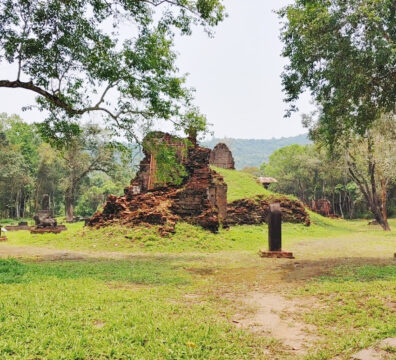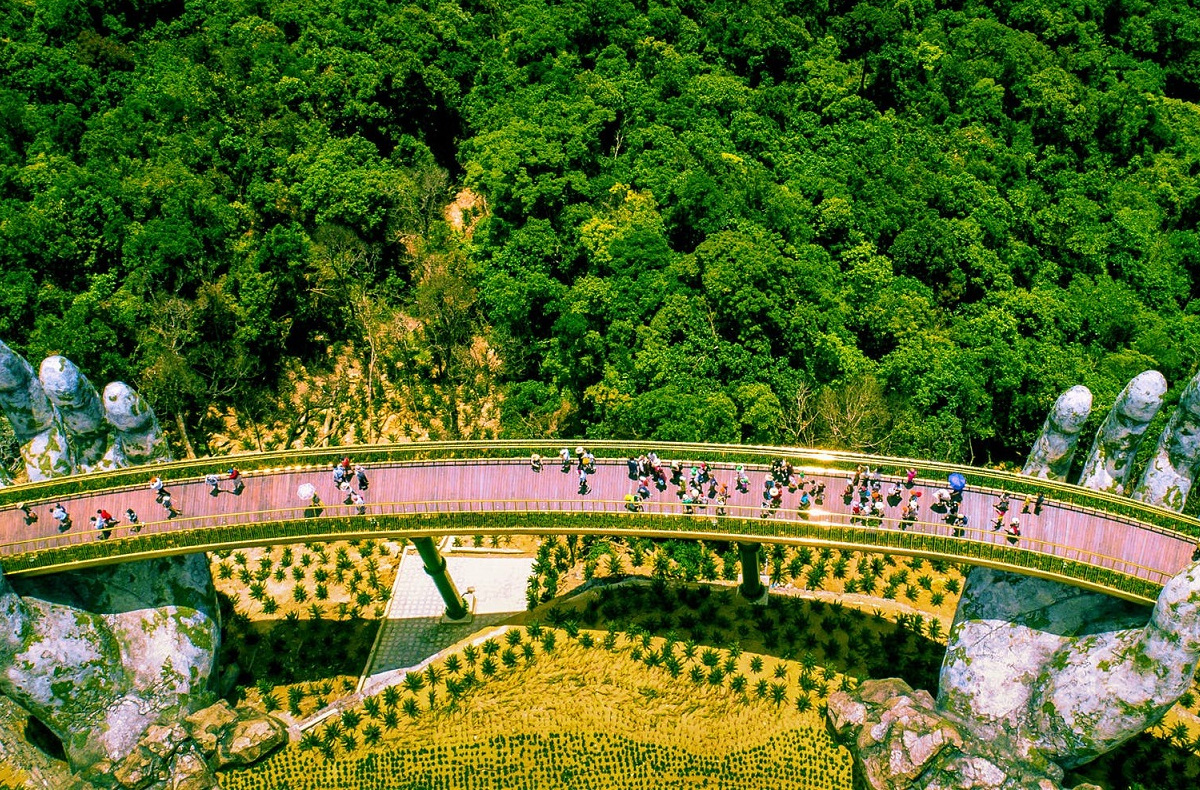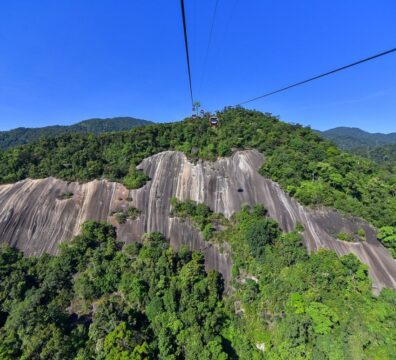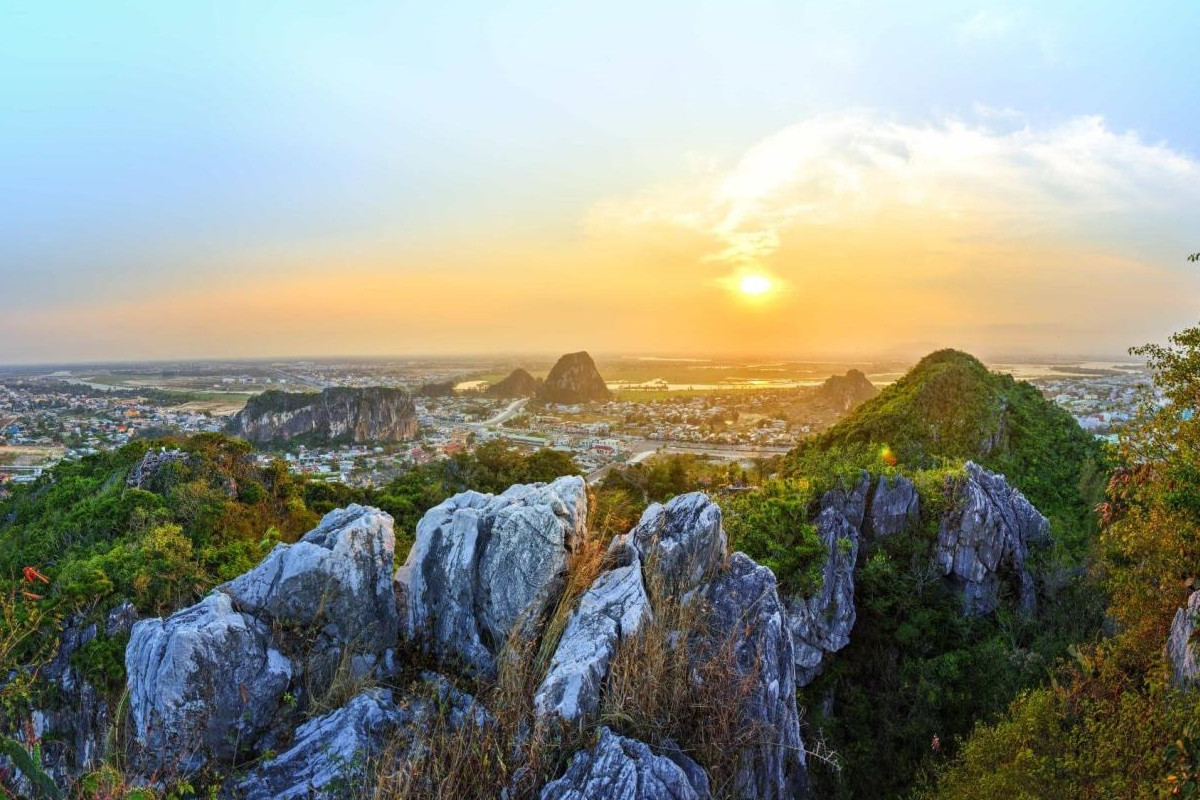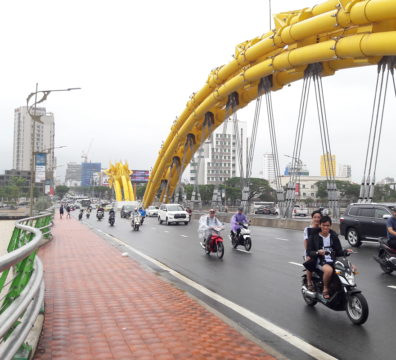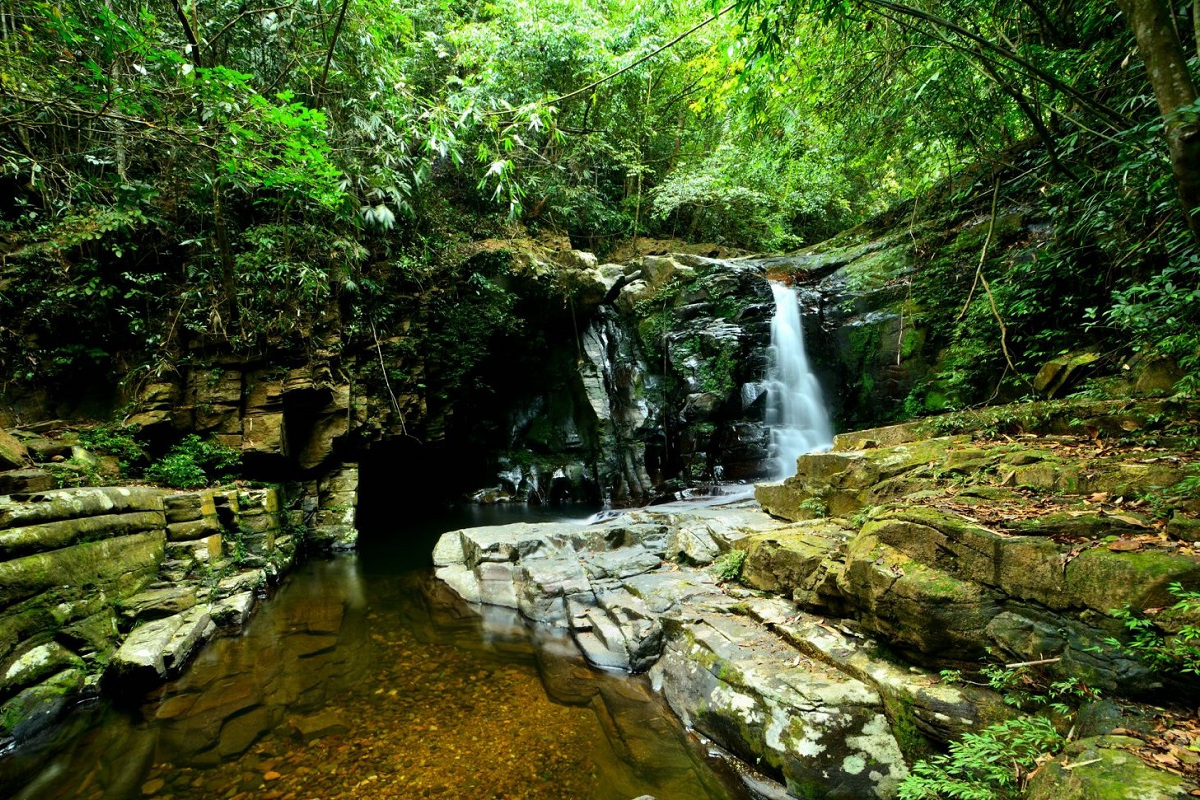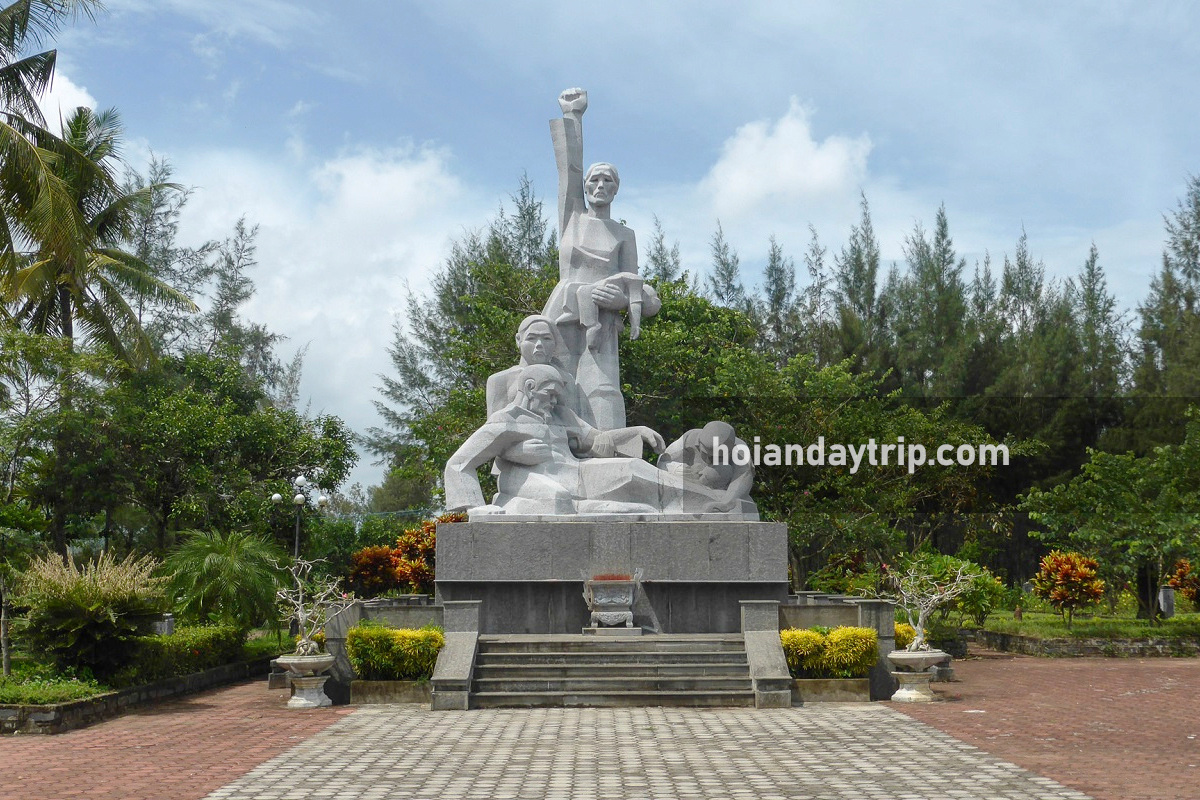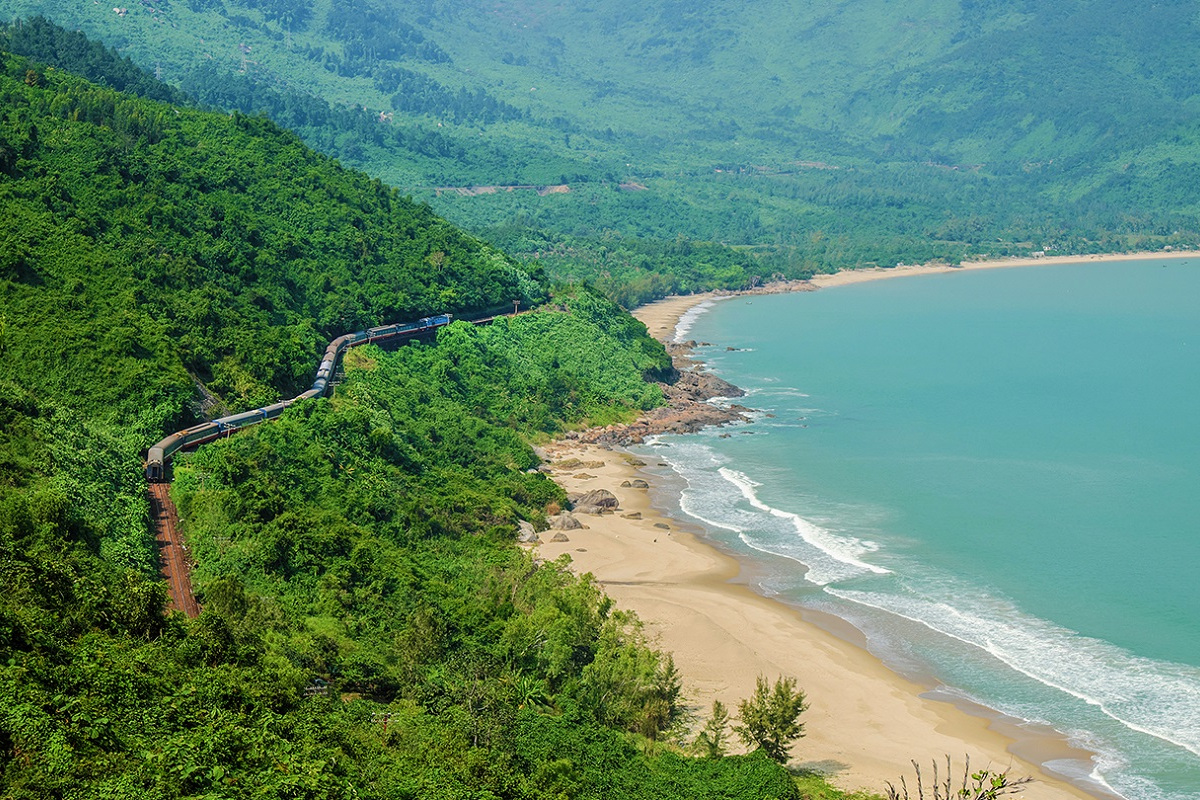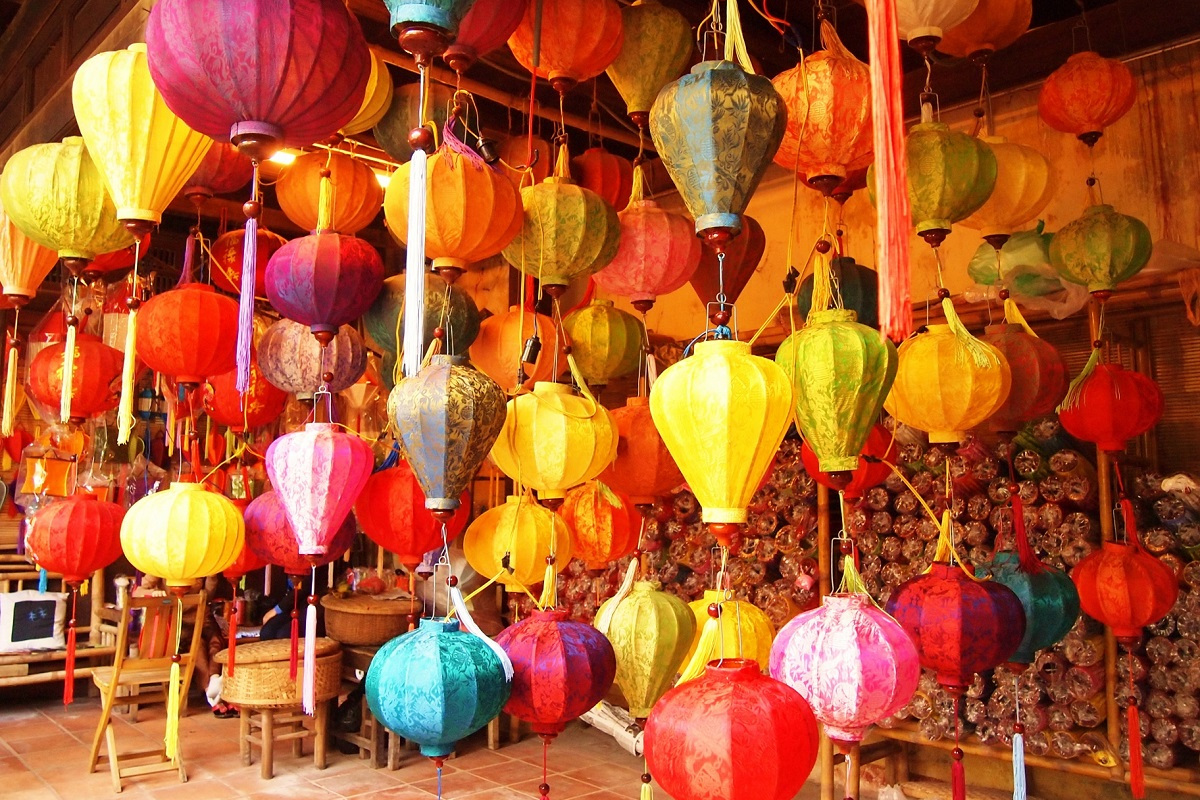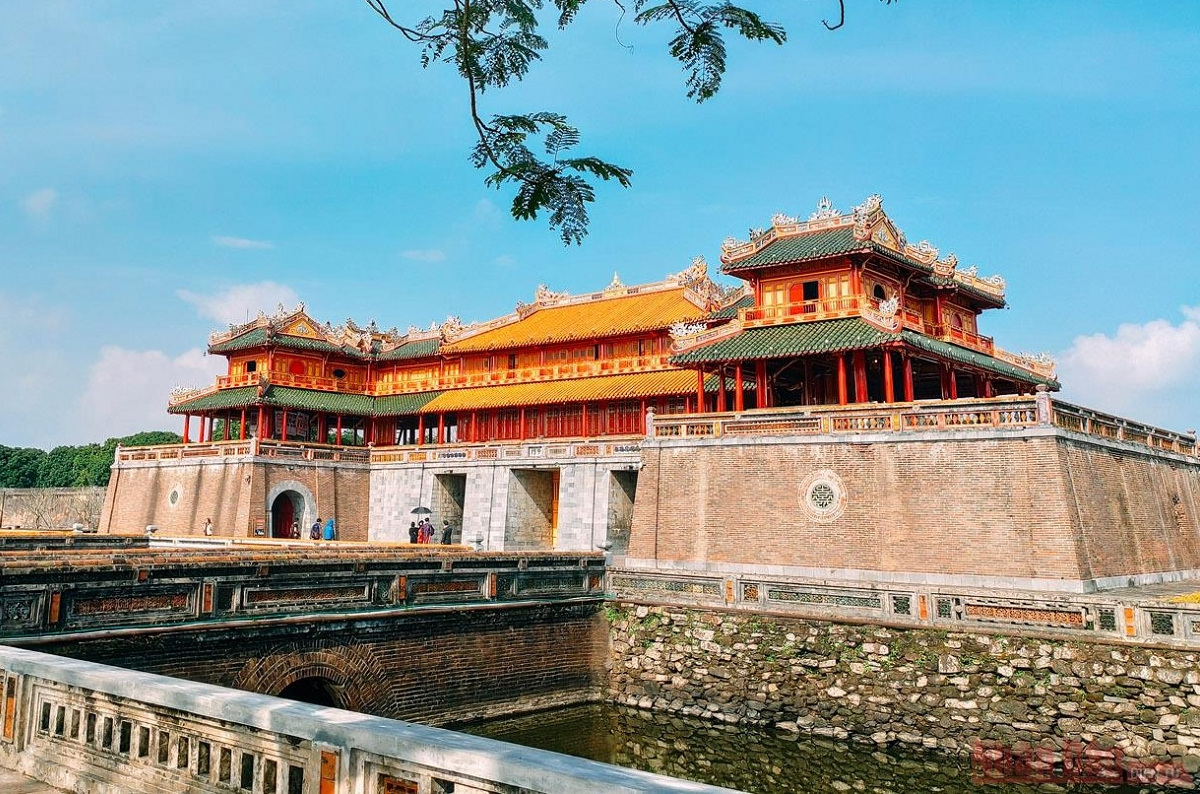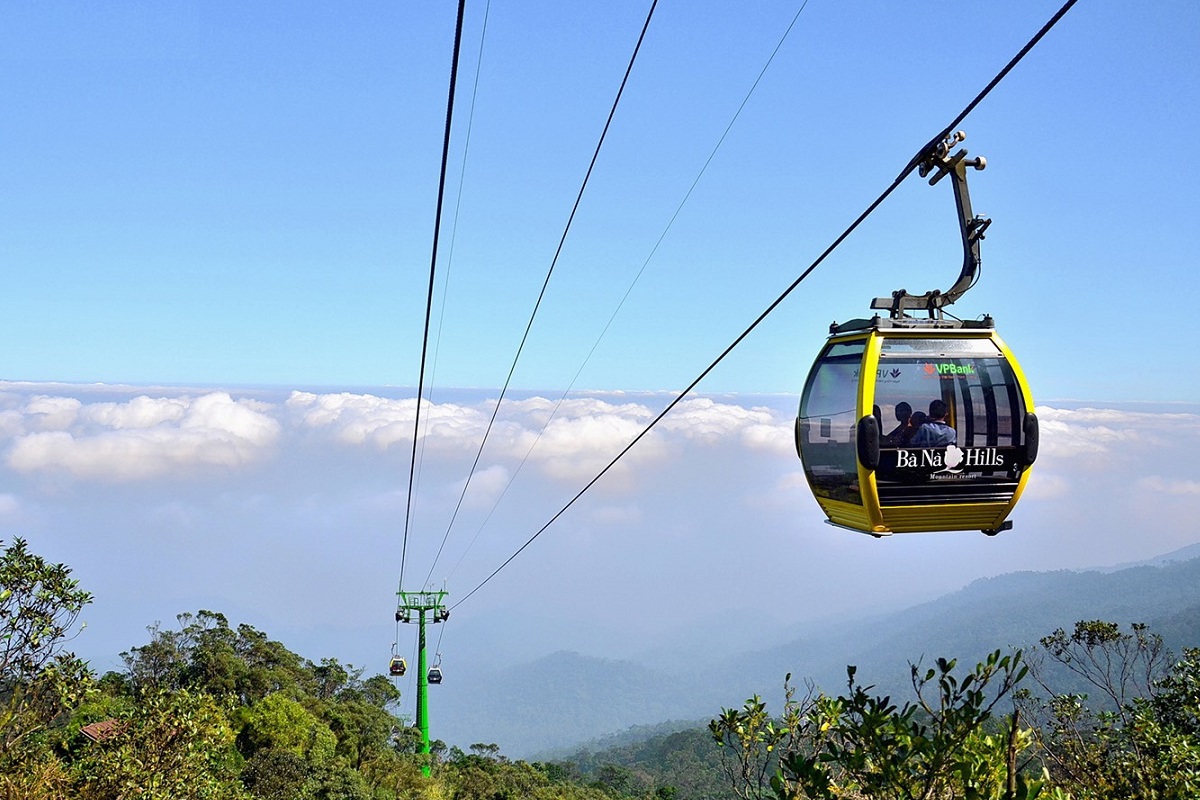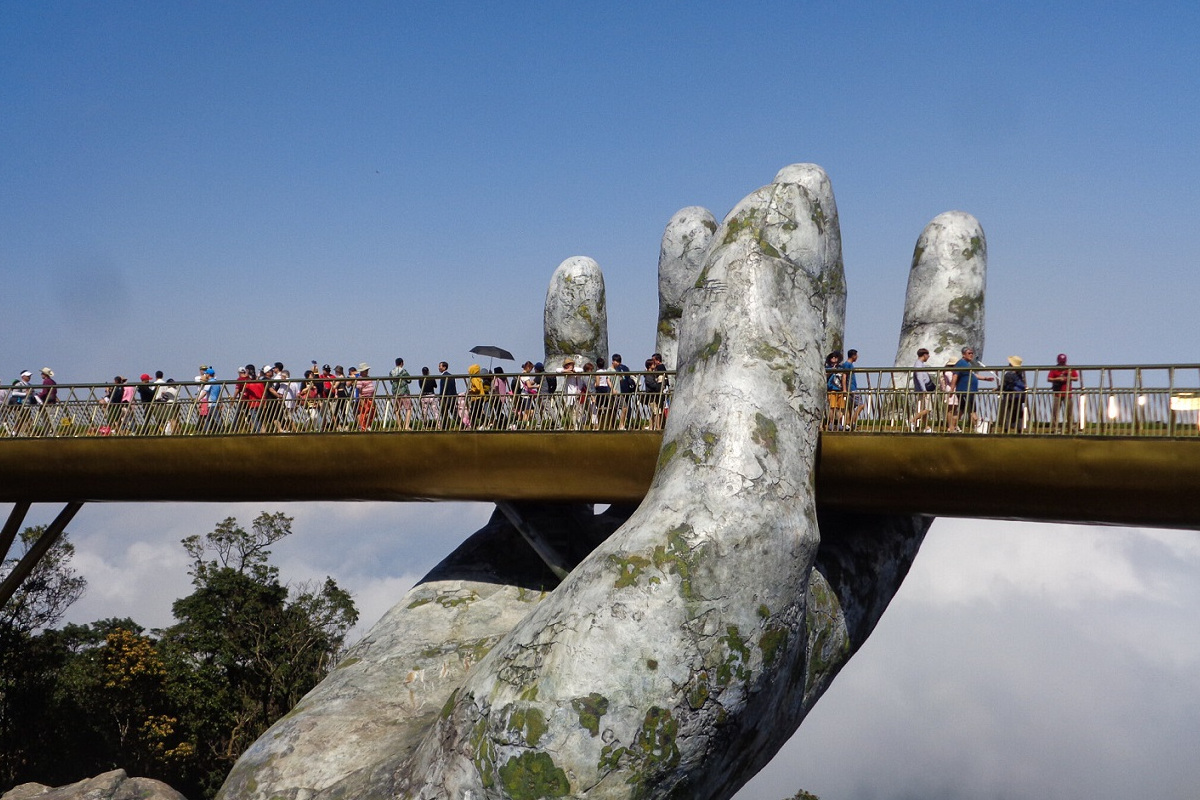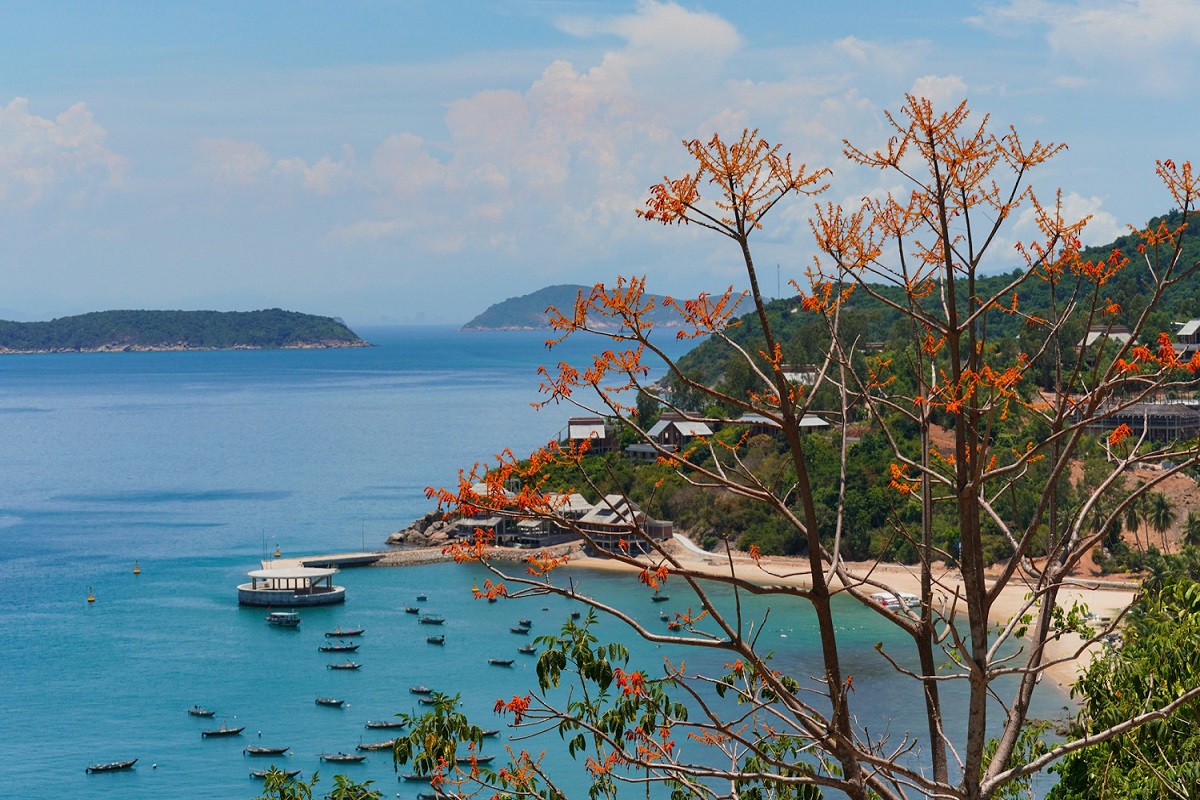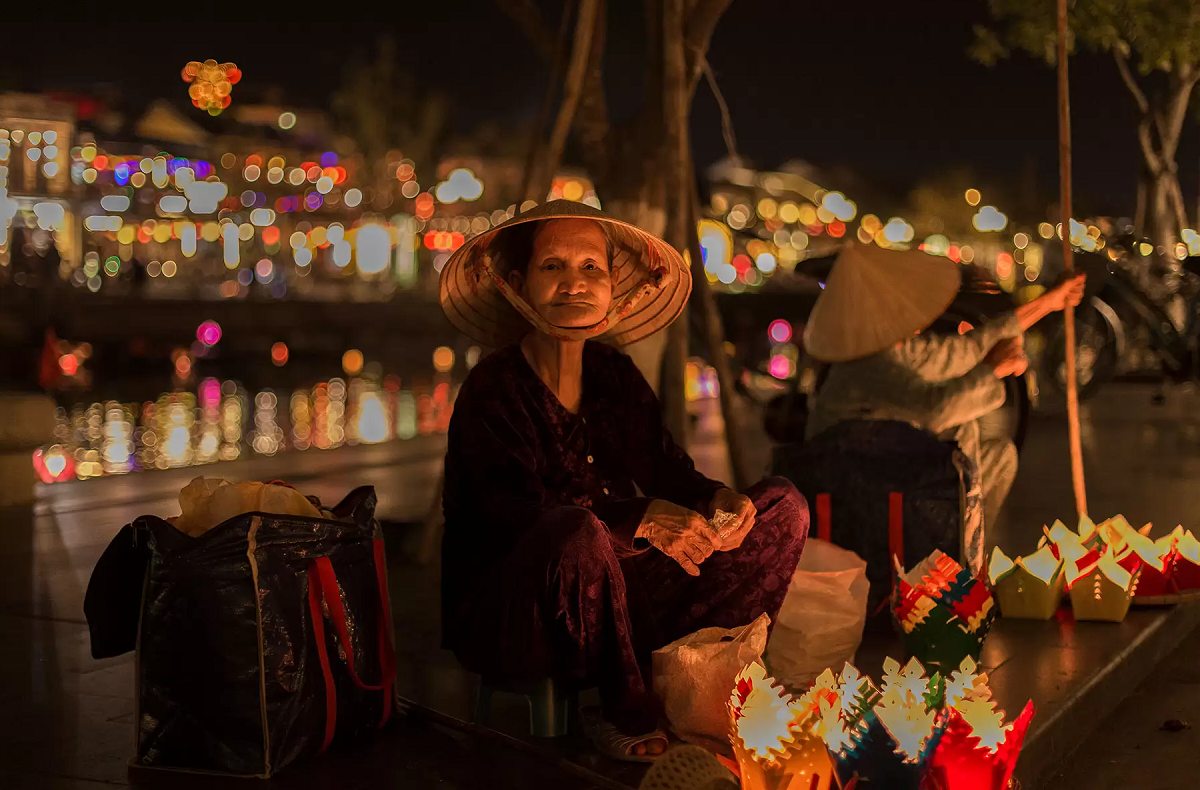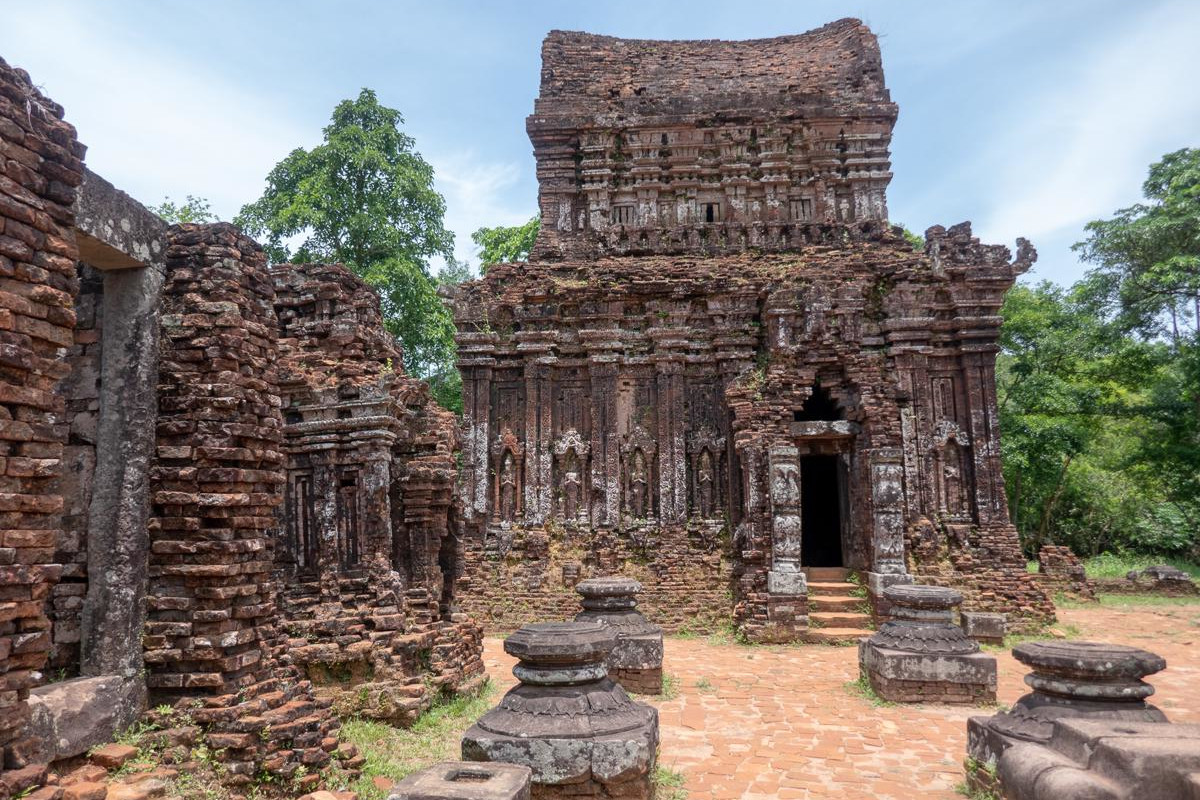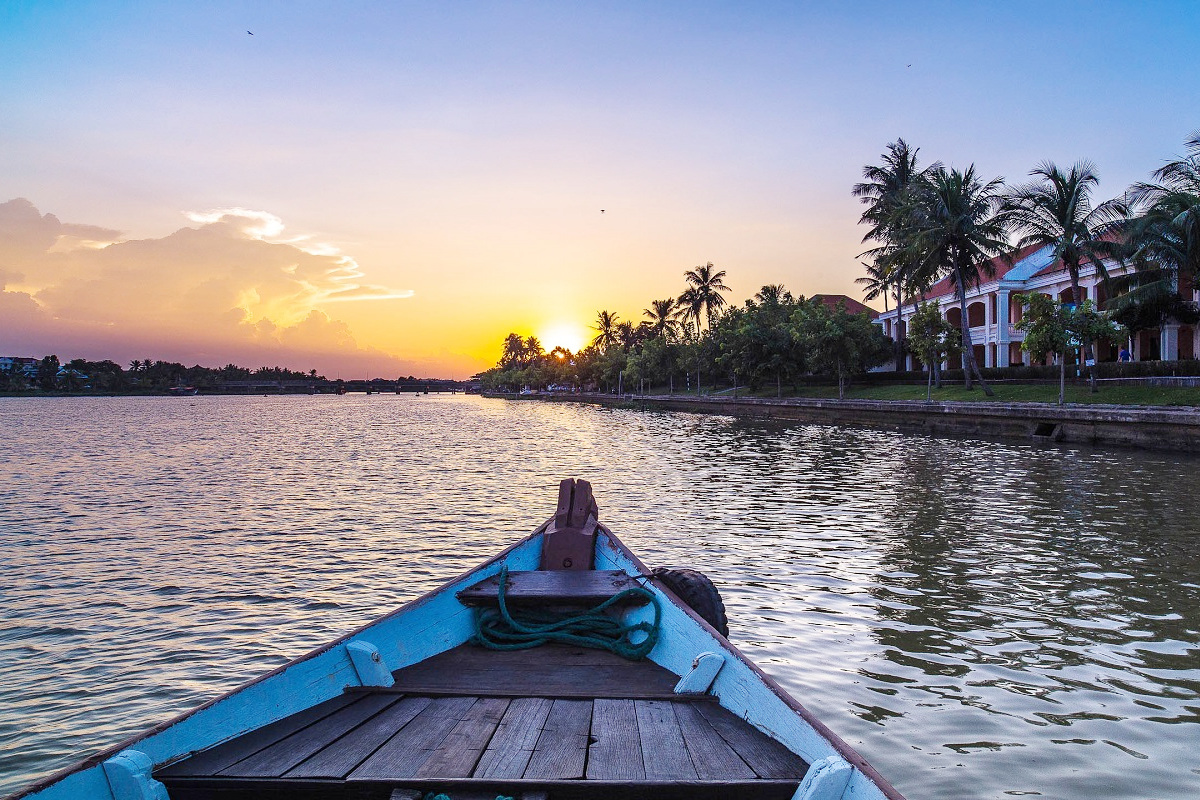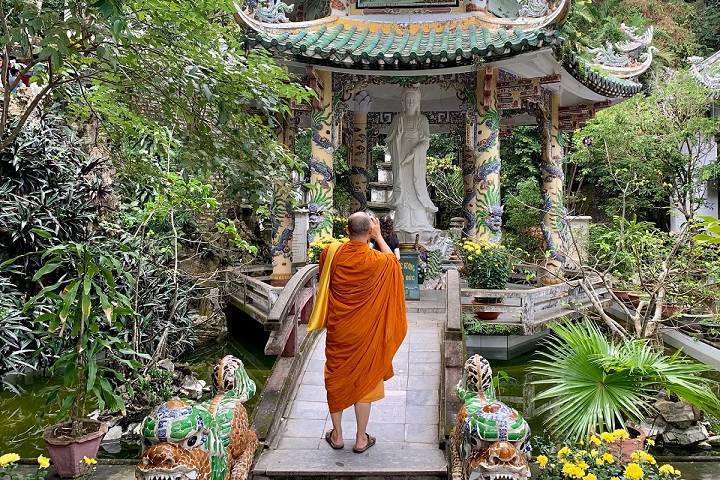In Central Vietnam, Da Nang has a tropical monsoon climate with two distinct seasons that each starts later than the North 2 months. Because of being shielded by the spectacular Hai Van Pass Range, it’s not much affected by the cold winds from China. So, the temperature is warmer than neighbouring city Hue, and doesn’t fluctuate much throughout the year. Thanks to the moderation, it becomes a popular beach destination to domestic tourists and a favourite to winter vacationers. Luckily, Da Nang’s attractions mainly are (and in) mountains or have a higher location than flood waters. This gives the city an advantage compared to nearby cities in the rainy season. Located on the top of Da Nang, Ba Na Hills (station) is famous for its cool weather all year round.
This article outlines weather and climate in Da Nang, from general to particular, and from month to month. What’s on, highlights and special events are what we provide, and the tips. We highly recommend reading the weather guide to Hoi An, a close city that is always in the same trip to travelers. There are many differences compared to Da Nang.
Read also:
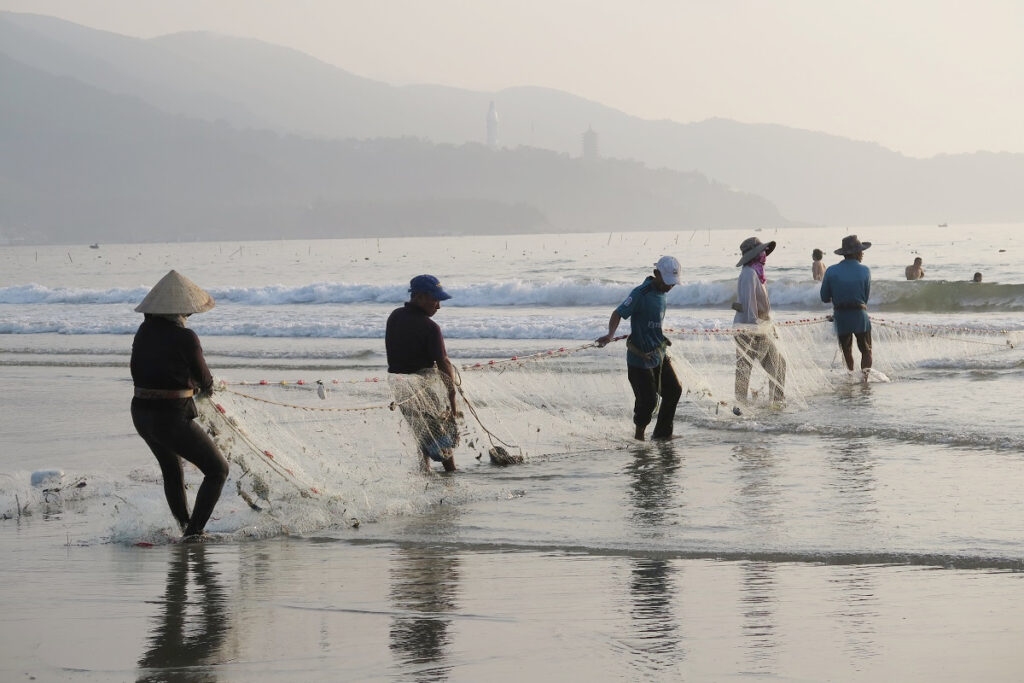
Table of content
- 1 Da Nang Weather All Year Round
- 2 Da Nang Weather in January
- 3 Da Nang Weather in February
- 4 Da Nang Weather in March
- 5 Da Nang Weather in April
- 6 Da Nang Weather in May
- 7 Da Nang Weather in June
- 8 Da Nang Weather in July
- 9 Da Nang Weather in August
- 10 Da Nang Weather in September
- 11 Da Nang Weather in October
- 12 Da Nang Weather in November
- 13 Da Nang Weather in December
- 14 Related Posts
- 15 Non Nuoc Beach: The Famous Beach of Da Nang
- 16 How to Get from Da Nang to My Son Sanctuary
- 17 Bach Ma National Park: Hiking, Trekking in Da Nang and Hoi An
- 18 Am Phu Cave (Hell Cave) – Things to Do in Da Nang
- 19 Asia Park and Sun Wheel in Da Nang (Sun World Da Nang Wonders)
- 20 How to Get to Golden Bridge from Da Nang
- 21 Da Nang Food Specialties: What to Eat in Da Nang
- 22 How to Visit Golden Bridge Vietnam
- 23 Da Nang Shore Excursions: Guided Tours From Tien Sa Port
- 24 Han Market (Cho Han): Where to Shop in Da Nang?
- 25 Da Nang Cathedral (Da Nang Pink Church)
- 26 Things to Do in Ba Na Hills Besides Golden Bridge
- 27 Da Nang Half Day Tours
- 28 Da Nang Private Car and Driver
- 29 Da Nang and Hoi An Itinerary for Visitors Staying Overnight in Hoi An
- 30 Da Nang Things to Do: Guide to What to Do in Da Nang Vietnam
- 31 Da Nang Best Things to Do and Reasons
- 32 How to Get From Hoi An to Da Nang
- 33 Hoi An or Da Nang: Which is Better for First Time Visitor?
- 34 My Son Sanctuary Tour
- 35 Featured Tours and Experiences
- 35.0.1 Bach Ma National Park Tour from Hue
- 35.0.2 Bach Ma National Park Tour from Da Nang/Hoi An
- 35.0.3 Hoi An Sunrise Fish Market Tour
- 35.0.4 My Lai Massacre Tour
- 35.0.5 Golden Bridge/Ba Na Hills & Hoi An Tour
- 35.0.6 Hoi An Instagram Tour
- 35.0.7 Ky Anh Tunnel & Tam Thanh Mural Village Tour
- 35.0.8 Da Nang to Hue Motorbike Tour with Hai Van Pass & Easy Rider (1 Way)
- 35.0.9 Hue to Da Nang Motorbike Tour with Hai Van Pass & Easy Ride (1 Way)
- 35.0.10 Hue to Hoi An Motorbike Tour with Hai Van Pass & Easy Rider (1 Way)
- 35.0.11 Hoi An to Hue Motorbike Tour with Hai Van Pass & Easy Rider (1 Way)
- 35.0.12 Tra Que Vegetable Village Tour with Cooking Class
- 35.0.13 Ba Na Hills Half Day Tour from Hoi An
- 35.0.14 Marble Mountain & Hoi An Day Tour from Da Nang Port
- 35.0.15 Hue Day Tour from Chan May Port with Lunch
- 35.0.16 Marble Mountain & Hoi An Tour from Chan May Port
- 35.0.17 Ba Na Hills/Golden Bridge Tour from Da Nang Port
- 35.0.18 Ba Na Hills/Golden Bridge Tour from Chan May Port
- 35.0.19 Golden Bridge Private Tour with Ba Na Hills & Lunch
- 35.0.20 Ba Na Hills Afternoon Tour with Golden Hands Bridge
- 35.0.21 Ba Na Hills Private Tour with Golden Hands Bridge
- 35.0.22 Ba Na Hills Half Day Tour with Golden Bridge
- 35.0.23 Ba Na Hills Early Morning Tour to Beat the Crowds
- 35.0.24 Golden Bridge and Ba Na Hills Night Tour
- 35.0.25 Golden Hands Bridge Tour In Sunrise or Sunset (1/2 Day)
- 35.0.26 Cam Kim Island Bicycle Tour From Hoi An
- 35.0.27 Cham Island Tour From Hoi An (Group Tour)
- 35.0.28 Cham Island Tour From Da Nang (Group Tour)
- 35.0.29 Hoi An Vegetarian Food Tour
- 35.0.30 Hoi An Evening Walking Food Tour with Local Foodie
- 35.0.31 Private Hoi An Basket Boat Tour (Shuttle Bus, Bicycle, Bike)
- 35.0.32 Half-day Am Phu Cave Tour (Private)
- 35.0.33 Hoi An Countryside Tour by Electric Car or Bike
- 35.0.34 Da Nang Tour Package From Singapore
- 35.0.35 Hoi An Evening Tour From Da Nang with Lantern Boat Ride
- 35.0.36 Hoi An Walking Food Tour Through Laneways
- 35.0.37 My Son Sanctuary and Hoi An Old Town Tour
- 35.0.38 My Son Day Trip From Hoi An including Marble Mountains and Basket Boat
- 35.0.39 Half Day Hoi An City Tour With River Cruise
- 35.0.40 Son Tra Peninsula Tour with Marble Mountains (Private/Small Group)
- 35.0.41 Hue Day Trip From Hoi An with Hai Van Pass, River Cruise & Lunch
- 35.0.42 Hoi An Ancient Town and Countryside Tour (Bests of Hoi An Tour)
- 35.0.43 Hoi An Tour From Da Nang Airport (Private, Optional Lunch)
- 35.0.44 Hoi An Day Trip From Da Nang (Marble Mountains, Basket Boat, Old Town)
- 35.0.45 Da Nang City Tour From Airport (Private, Optional Lunch)
- 35.0.46 Hoi An City Tour with Lantern Class, Lantern Boat, Night Market & Local Food Sampling
- 35.0.47 Marble Mountains, Basket Boat Ride & Hoi An Old Town Walking Tour
- 35.0.48 Marble Mountains & Golden Bridge/Ba Na Hills Day Tour
- 35.0.49 Marble Mountains & Monkey Mountain Tour (Half-day, Private)
- 35.0.50 Private Golden Bridge Sunrise Tour (Half-day, Optional Lunch)
Da Nang Weather All Year Round
Da Nang Seasons
Like most parts in the Central and South of Vietnam, there are 2 distinct seasons in Da Nang: the wet (or rainy) and the dry. The dry season starts from January and lasts until the end of August. It features many sunshine hours daily coupled with a high temperature, low rainfall and humidity. The rest of the year corresponds to the wet season, between September and December. During this period, rains frequently occur, making the atmosphere more comfortable. Typhoons and local floods are not rare, most seen from October to December (so-called “the typhoon season”). Cold winds from the north have blown into the city for many days, causing a quick decrease in the temperature. Locals often wear winter coats when hanging out, and call the time “the winter season”.
Peak tourist seasons are around February, end of April to May for local visitors, and from November to beginning of January for foreign visitors.
Temperature in Da Nang
Da Nang average temperature: 25,6oC
Da Nang temperature by month: – January: 22,5 oC – February: 24,4 oC – March: 26,8oC – April: 29,2 oC – May: 31,3 oC – June: 31,8 oC – July: 31 oC – August: 30,8oC – September: 29,5 oC – October: 27,1 oC – November: 25,5 oC – December: 23,1oC
Da Nang (sea) water temperature: – January: 23,3 oC – February: 23,3 oC – March: 23,3oC – April: 25,1 oC – May: 27,9 oC – June: 29,7 oC – July: 29,9 oC – August: 29,8oC – September: 28,9 oC – October: 27,2 oC – November: 26,6 oC – December: 24,6oC
Da Nang Rainfall by Month
– January: 118ml – February: 49ml – March: 58ml – April: 81ml – May: 84ml – June: 66ml – July: 91ml – August: 126ml – September: 183ml – October: 235ml– November: 275ml – December: 204ml
Da Nang Typhoon and Flood
From October to December, typhoons hit Da Nang region and then cause flooding in low lands. This “typhoon season” may be longer or shorter depending on the El Nino and La Nina cyclones. Number and frequency of the typhoons are also changed due to the climate patterns in the Pacific ocean. Unlike Hue and Hoi An, the city is known for local floods (rain water not yet drained) rather than widespread floods as a result of river water rising and releasing water from dams. Therefore, flooding time is short and only some issues that people may face, such as congestion, engine death of motorcycles.

Da Nang Weather in January
January is the first month of the dry season in Da Nang. Generally, the average temperature slightly increases, about nearly 25oC and the average rainfall decreases a bit, compared to previous month December. Sunny hours in the day are more and probably it’s drier, allowing locals to be on the go with outdoor exercises and activities again. However, there is still a need to wait for a time to let the sea water warm up for swimming and the sky becomes clearer for sunbathing. Bringing a poncho because it may rain suddenly.
At the end of this month, the pace of life in the city gets busier because of Tet Holiday – Vietnamese biggest festival of the year. Markets, shophouses and streets are more bustling with people who go shopping to prepare for the important celebration. Travelers can see the most diverse products for sale ever, and plenty of colorful flowers and trees, including hoa cuc (yellow daisy), hoa mai (apricot) and kumquat.
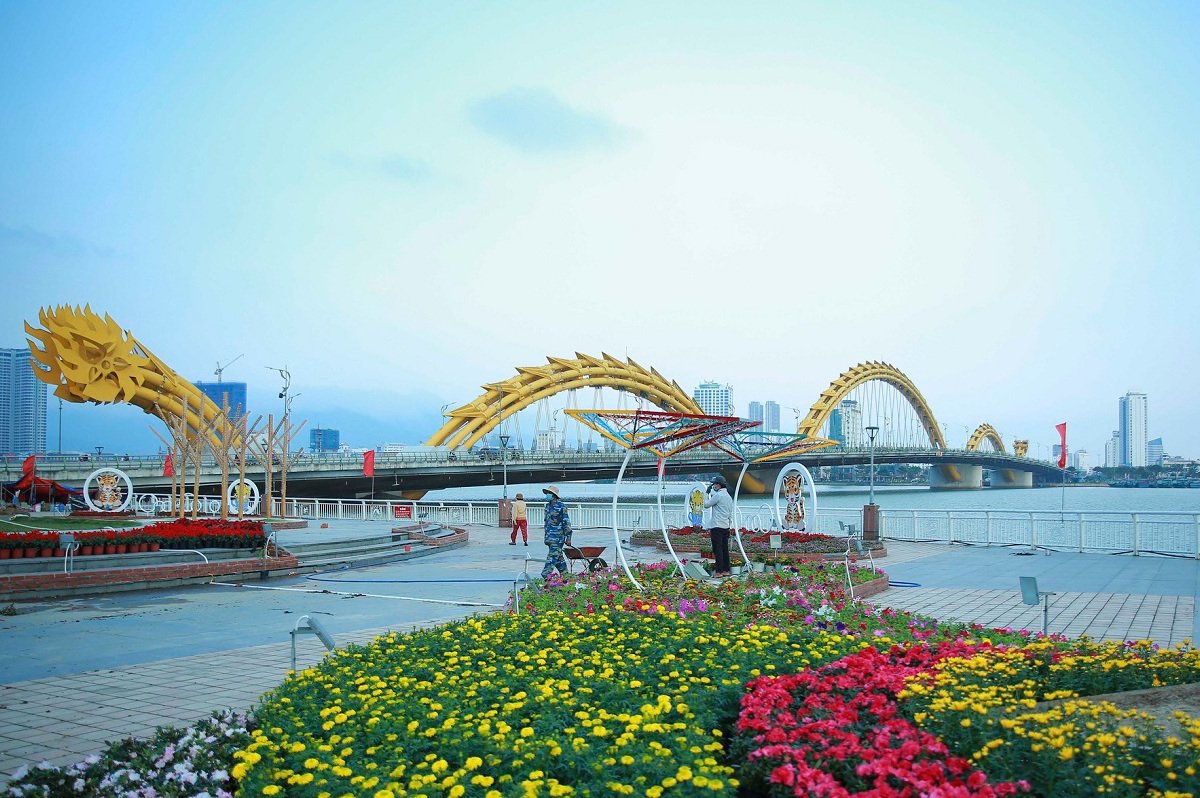
Da Nang Weather in February
February in Da Nang is that the temperature is not high like later months, averaging 26oC, and the rains seem to not occur. Typhoons and floods are rarely seen, replaced by clear, peaceful sky and dry streets. It’s possible to watch golden rays of the sun in the dawn at My Khe Beach, or a mellow sunset at the Son Tra Peninsula throughout the weeks. On the coastline, more swimmers and sport players come in cool hours.
This month is one of the most expensive times of the whole year, because of Tet Holiday. It officially lasts one week or longer and during it, people don’t work and spend time with the family, such as visiting relatives or traveling. For that reason, shortage of labour and closing of businesses lead to great fluctuations of price for nearly everything. In addition, crowds are everywhere, making hotels, restaurants, and other tourist venues always overloaded. To avoid this, plenty of people plan to travel after Tet, but these issues are still the same. Besides lots of opportunities to understand local culture, Tet Holiday is not really a wonderful time for travelers.
Note: Remember to ask the opening times of the restaurant you mean to eat out during the official days of Tet. Simpler, just walking out the streets and seeking a delicious dish from the vendor. Unlike the past, food stalls (and markets) open from the 2nd day.
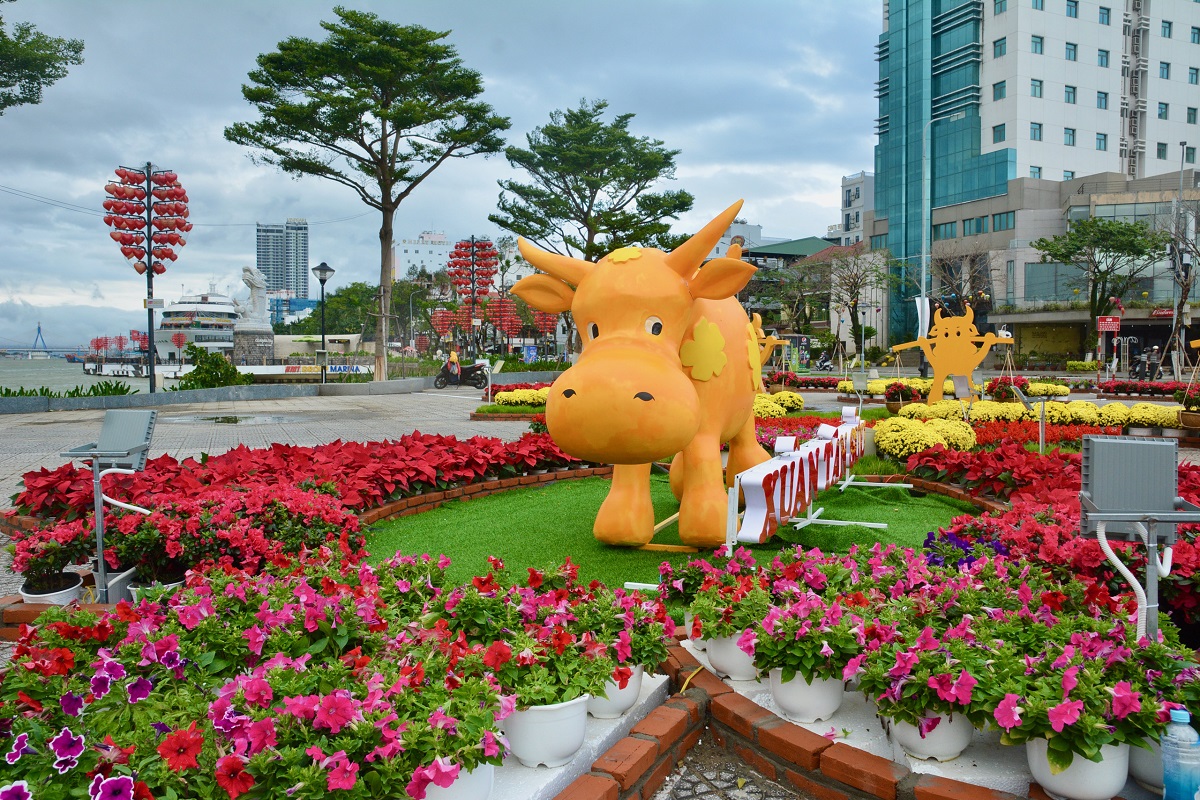
Da Nang Weather in March
March is a shoulder period, in which domestic tourists return home all for work and plan the next holiday in the second half of April. Thanks to that, it’s absolutely possible to expect a sightseeing without crowds, many hotel options to choose from and forget a table reservation at all times. The weather is idyllic for taking photos and participating in open-air activities. It’s clear, blue skies, a ray of sunshine, gentle winds and graceful sceneries. The temperature is almost 29oC on average, and rises steadily until the end of the dry season. On 10th March, food and beverage venues are busy due to the Hung Kings Commemoration Day.
The most featured event in March is the Quan The Am Festival in the Marble Mountains – a complex of striking hills. It’s the second largest traditional celebration, held from 17th to 19th days of the 2nd lunar month and the main celebration is in 19th day. There are many activities that are worth seeing, such as procession on the streets, candle lanterns at night.
– Quan The Am Festival 2021: 31st March
– Quan The Am Festival 2022: 21st March
– Quan The Am Festival 2023: 9th April
– Quan The Am Festival 2024: 28th March
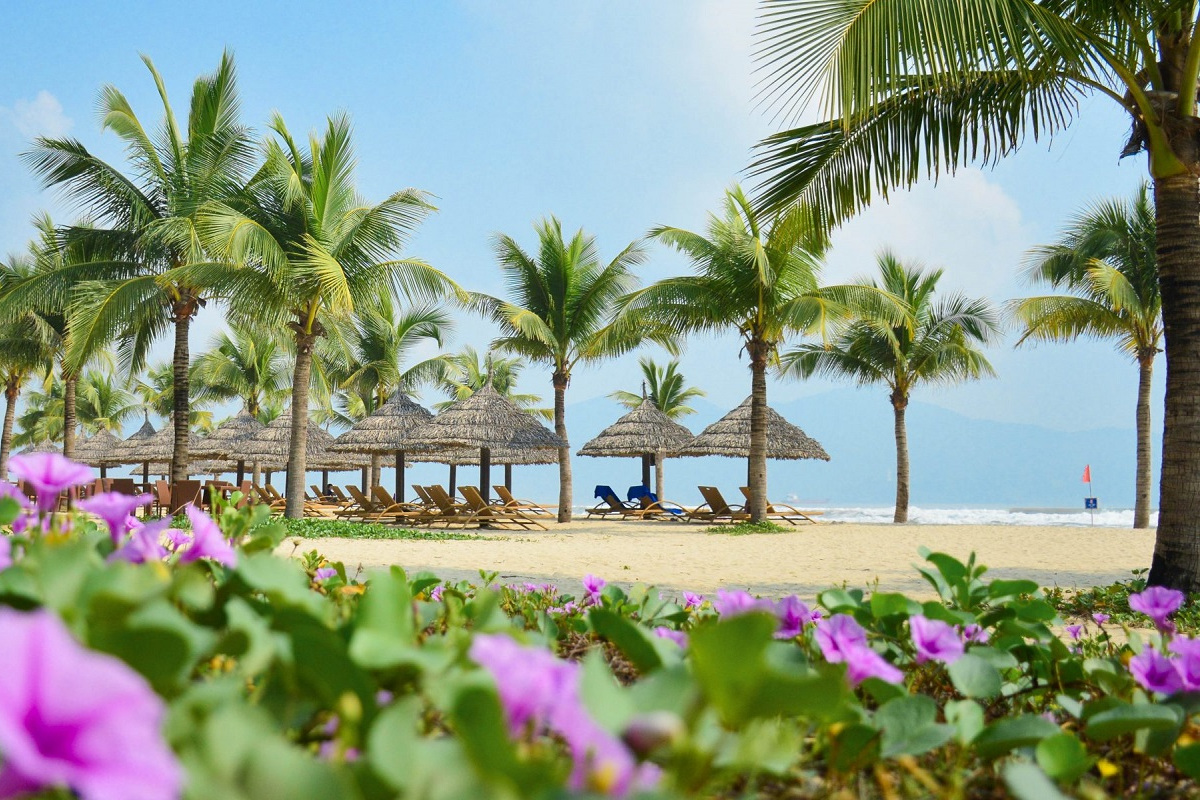
Da Nang Weather in April
April is a peak season for domestic tourism because of sunny weather, long public holidays and summer break of students. Families and company workers are major tourists, and the beach (like Da Nang) is their traditional destination. Number of travelers increases towards the end of the month when the official holiday starts. Average temperature is 31oC and rainfall is really low. Thanks to good weather, many outdoor celebrations and events are held, including the Beach Festival in My Khe Beach. Keeping in mind to book the most favorite accommodation early to avoid it’s booked. If possible, trying to come to Da Nang earlier than 20th day, you may not see long queues before ticket counters, attractions filled by visitors, congestion and all-reserved tables in eating and drinking places.
Hotels in Ba Na Hills (station) are among the best options to stay overnight. The temperature there is much cooler than the city, around 16oC in the evening. If booking one room here, you may be the first visitor to the Golden Bridge of the day.

Da Nang Weather in May
May is hotter than April, and it marks a start for the warmest span of time in the whole year. Average temperature is 33oC, but on many days, it may be up to nearly 40oC. Moreover, the sunlight hours are from 230 to 275 hours, higher than many previous months and the skies are cloudless. No doubt, it’s great to make a visit to beaches, water parks, outdoor adventures or underwater discoveries. Crowds are only seen in the early morning or later afternoon onwards, because of strong heat in the midday. Much UV radiation and sun exposure during it damages the skin, so keep in mind to bring sunscreen and lots of water to drink.
In the first week of May, one of the longest public holidays for Vietnamese still occurs. Therefore, if having no other options, remember to book an accommodation in advance, at least 15 days. Price is surely more expensive than usual.
The dry season in Central Vietnam is known for torrid winds from the west or “Laos winds”. Due to moving over high peaks of the Annamite Range, this weather brings very high temperatures to the region, causing long-lasting droughts. Thankfully, Da Nang city is not affected.
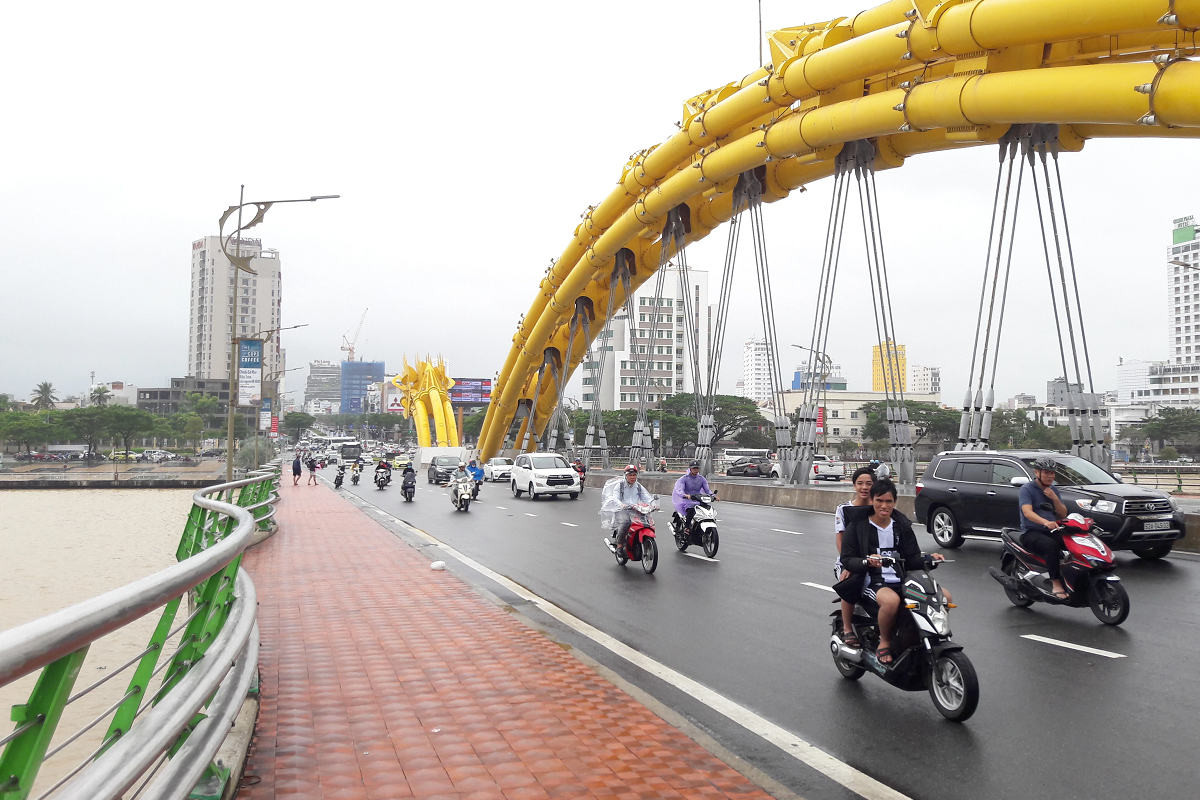
Da Nang Weather in June
June is the beginning of the hottest time in the year (from June to August). Day by day, the temperature is generally from 26 to 34oC, and occasionally, it rises to around 40oC. The strong midday heat occurs earlier than May, around 11 a.m and decreases gradually after 3 p.m. During this time, locals don’t like to go out much and prefer to stay indoors with fans or air-conditioning. On the streets, travelers will see many “street ninjas” who are women covering their whole body to shield themselves from the rays (sunburn). They wear a thick hoodie, face mask, sun glasses, gloves and a long garment. The scene of ninjas in the traffic is amongst the most memorable pics of Vietnam. By night, people tend to be near bodies of water, like beaches and riverside parks.
Thanks to the fact that it rarely rains, the Da Nang International Fireworks Festival is held in June. This annual celebration of lights is characterized by inviting competitions between teams representing different countries, including home city Da Nang. It aims to draw more tourists after the domestic tourism boom is just over. Debuted in 2008, the latest winner is from Finland whose performance best tells “Stories by the River”. See more details in our article to Da Nang’s festivals during the year.

Da Nang Weather in July
July is another hot month in Da Nang. The temperature doesn’t fall yet, and its average temperature varies from 25 to 35oC. The heat index (or real feel) may be up to 40oC, so it’s not hard to guess that there are no people on the street at noon. Travelers often leave the hotel early in the morning for sightseeing and avoid this midday heat until 3 p.m or later for hanging out. Locals tend to return to the room to sleep or head over to an air-conditioning coffee shop. Keep in mind to prepare a good set of sun protection, and drink a lot of water. It’s cooler in the evening, and places near the water or on a rooftop are most packed. By the coast, Da Nang citizens love drinking fresh sugar cane juice with ice and eating snacks.
Thanks to weather advantages, local fishers catch most seafood around July. Although it’s hot, this time is really nice to savour fresh dishes and shellfish from the sea. Additionally, a chance to watch the brightest sunrise and sunset are also provided.
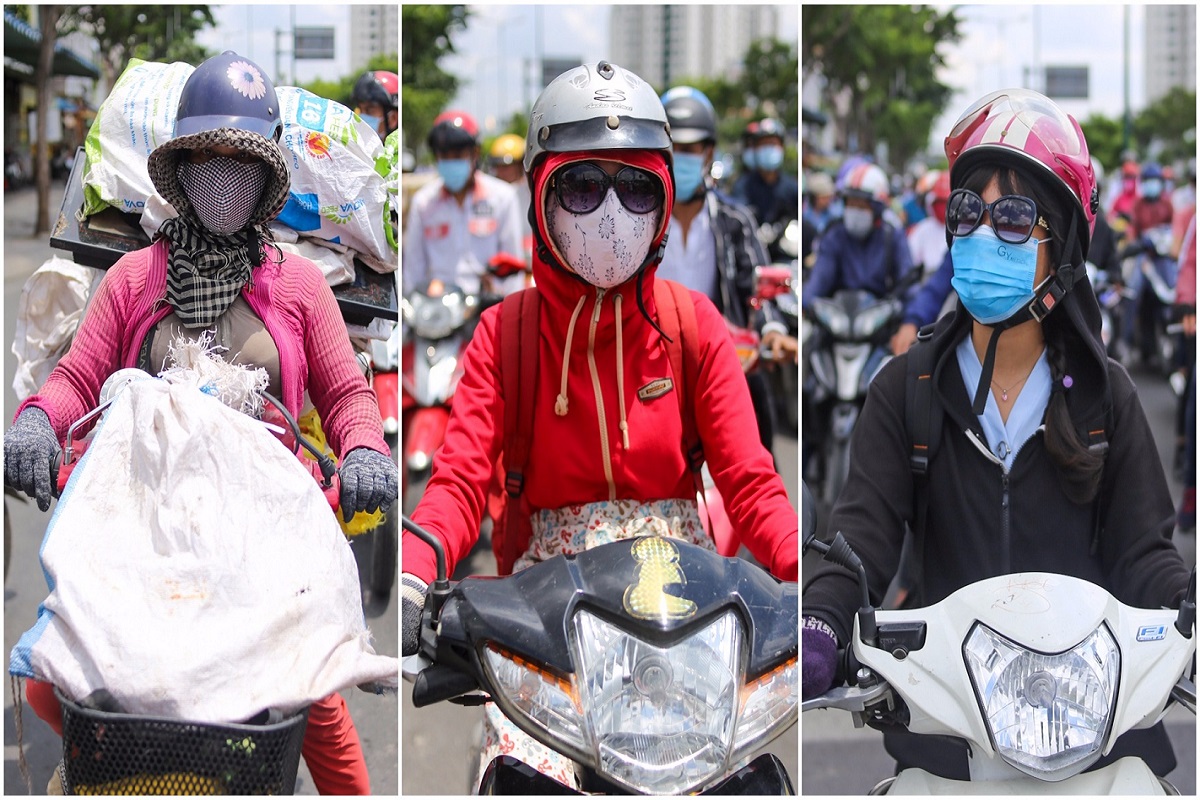
Da Nang Weather in August
August is the last extreme hot of the year, and the average temperature is from 25 to 33oC. If planning to see the city this month, booking an accommodation in the later weeks because the atmosphere may be more pleasant. The weather still supports outdoor and underwater explorations, like hiking, trekking, climbing, snorkeling and diving. Tours are still arranged because the number of tourists doesn’t decline significantly, and the price may be cheaper than previous peak seasons. In several years, it will rain “earlier” but not long and should check the weather forecast in advance.
The Wandering Souls (Ram Thang Bay, Vu Lan Festival, the Parents Day or Hungry Ghost Festival) is a local cultural tradition highlight in August. It’s held yearly on the 15th day in Buddhist temples, for example, the Marble Mountains. According to Buddhist thoughts, each person has an own day of death that is predetermined by the King of Hell. If unfortunately passes away before, he/she can’t attend the last judgement and be rebirthed in the next world. So, the dead souls have to wander around to seek foods, drinks and places to live, and wait until reincarnation day. To help, locals make delicious dishes, buy fruits, flowers, light up candles and incense sticks to give them, and pray for them. Meanwhile, people also commemorate their dead parents.
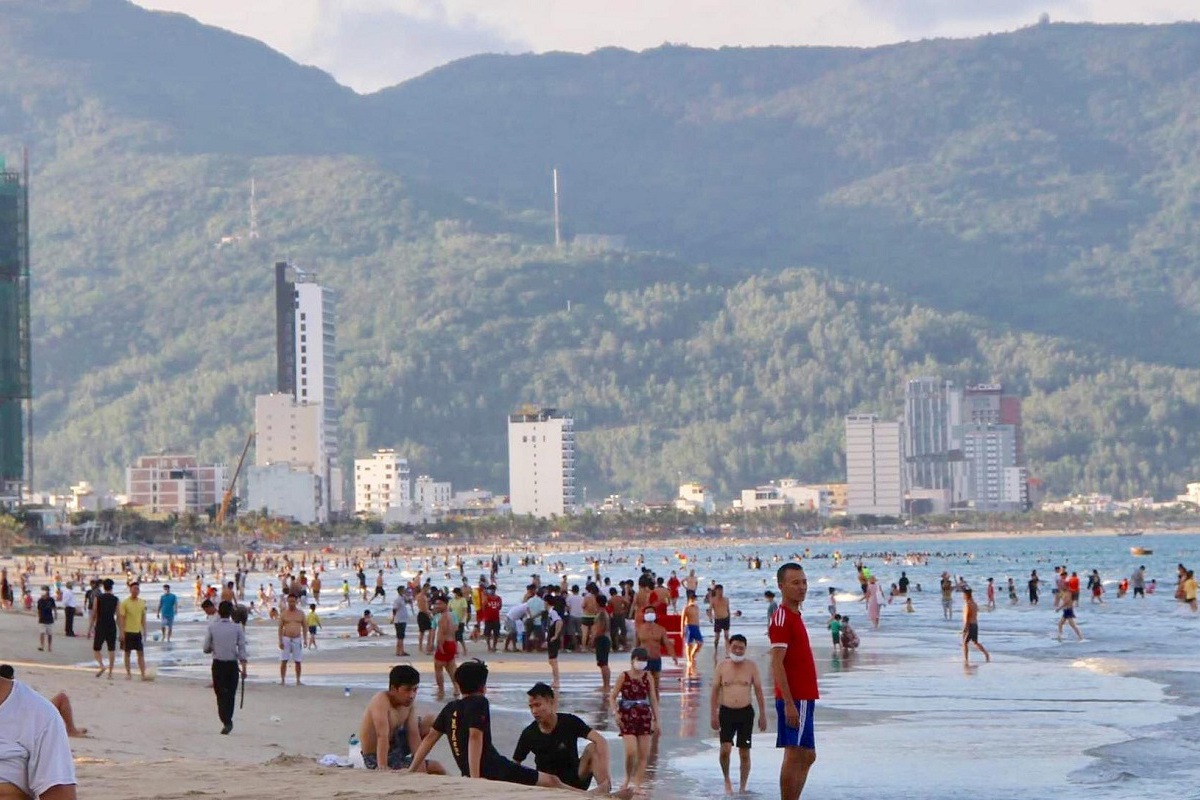
Da Nang Weather in September
September is the beginning of the wet season. In which, the temperature starts decreasing and the rain occurs more frequently than August, but not too much. Degree of the temperature in this month is 32oC on average and becomes lower towards the final weeks. Due to moderate weather, the local tourism industry flourishes, especially for the international market. In the first week, the domestic market is vibrant again thanks to the last holiday of the year. So, travelers can expect to see different activities and experiences if visiting Da Nang.
The most featured cultural celebration in September is the Mid Autumn Festival (Tet Trung Thu). It’s held around the full moon of the 8th lunar month, not just the 14th day. For Vietnamese, this special event is family reunion and childrens, so called “the Children Festival”. The little ones are given star-shaped candle lanterns, allowed to join lion or dragon dances and have a party of fruits and full-moon cakes with other older members. On the street, traditional dances stir up the atmosphere by sounds of drums and joyful performances that aim to get lucky money from houses. The Mid Autumn Festival in 2021 is 20th day, and 9th day, 28th day, 16th day for 2022, 2023 and 2024 respectively.
Around 2nd September (Vietnam’s Independence Holiday), domestic tourists return to Da Nang after the warmest period. Hotels may be overbooked, therefore, should make a reservation some weeks earlier to ensure the favourite room and avoid overpricing.
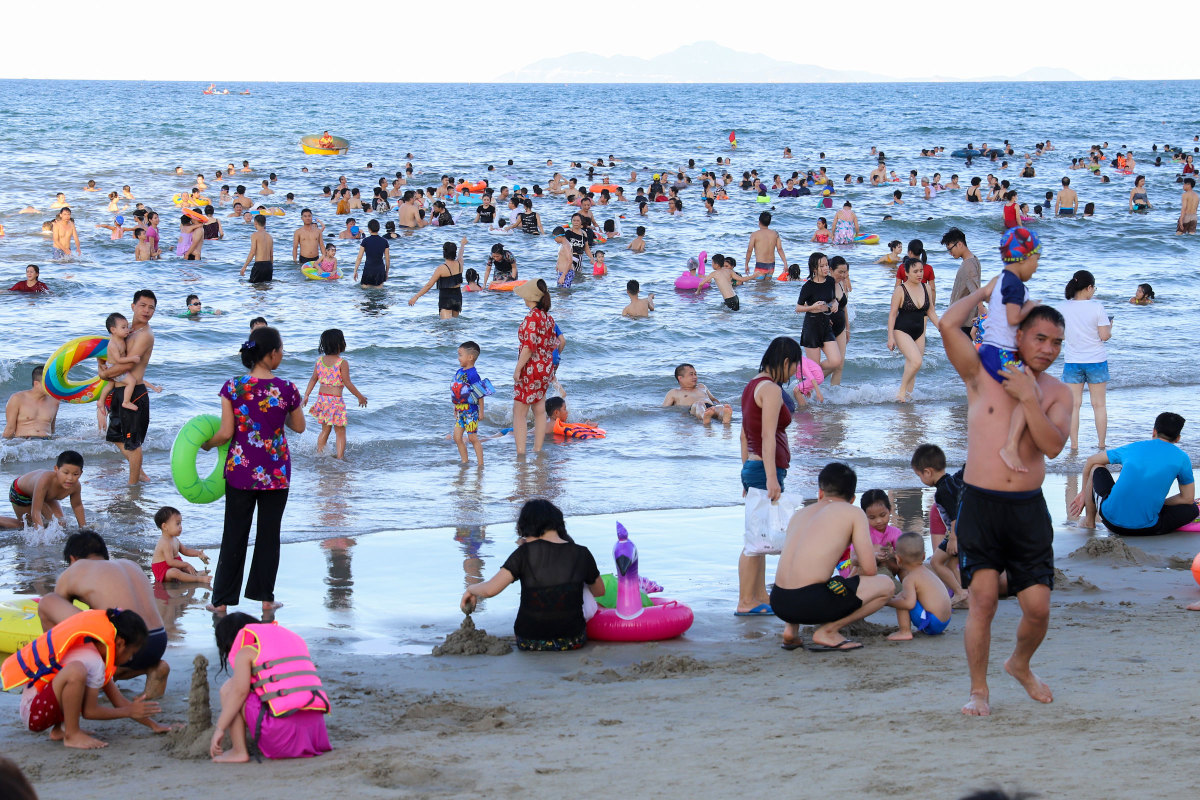
Da Nang Weather in October
Traveling in October means that you travel in the real wet season at Da Nang. It rains 24 over 31 days of the month, and may be in anytime during the day. Rainfall rises double (235 ml) than September, as a result. This causes a slight decrease in the average temperature to 29oC and potential local floods on some streets. After it rains, it’s nice to walk around the city and taste hot and delicious street foods. Locals wear more layers or winter coats to keep warmth, although not seriously affected by cold monsoon wind from the north (like Hue). Hai Van Pass does a great job in “weekening” it before coming into the city.
Beach games and underwater activities gradually stop in October, because of heavy rains, cold and cloudy water, and foremost, safety. In the mountains, darky clouds cover their tops and the sceneries are blocked or “degraded” in qualities. Roads leading to there are wet, with a limited foresight because of fog. The riders will face a potential traffic accident risk while cruising. In the Ba Na Hills and Golden Bridge, this month is the worst time to visit. At an elevation of 1,500 meters, all places are soaked in clouds, coupled with dizzle and winter temperatures. High humidity may damage escalators and visitors must walk on wet stairs to access main attractions.

Da Nang Weather in November
Weather in November is not much different from October, still wet. Degree of the temperature is from 22 to 25oC but the “real feel” is cooler, because the sunshine hours are just 4,5 hours a day. The rain drops in 24 days, pushing the average rainfall to 275 ml and by that, the month is not recommended for traveling by experts. Local floods may be quickly made on several central roads after it rains cats and dogs, and while in the circulation of typhoons. A rain gear set is necessary to prepare if planning to visit this fantastic city. November is the starting point for waves of international tourists that last till February. Crowds already are seen in several must-visit attractions, so should reserve a ticket if possible and select the times when people don’t gather yet.
The top tip for the wet season in Da Nang (not just November) is checking the weather forecast in advance, day by day. Shouldn’t go out in hours when the chance of rain is highest.

Da Nang Weather in December
December is the most humid month of the year, with the average amount of water vapor in the air is up to 90%. Moreover, the sunshine hours are least also, only 2,5 hours one day. Rain occurs in about 25 days, as a result, the average high-temperature is down to 23oC and the average low-temperature is 20oC. For the past 30 days, travelers need to prepare a rain gear set and bring it when hanging out. During the rainy hours, indoor activities and sights are still priorities if don’t stay in the room to relax. Museums are finest, and then impressive caves in the Marble Mountains.
In the last week of December, hotels, restaurants and tourist venues are decorated with twinkling lights and music on, giving Christmas vibes. The festive ambience is kept until the Vietnamese New Year in February. No doubt, this last month is the most joyful throughout the year. Keep in mind to book the accommodation early if it means to land in the city in December, and prepare a larger budget because of increasing prices. Travelers all over the world will come to spend the precious holiday for a couple of weeks, before going back home for work. Countdown parties are held in private and public places, attracting some thousands of attendants who dance, sing and smile to celebrate a new year. The biggest one is in My Khe Beach, with loud live music and lots of fun.
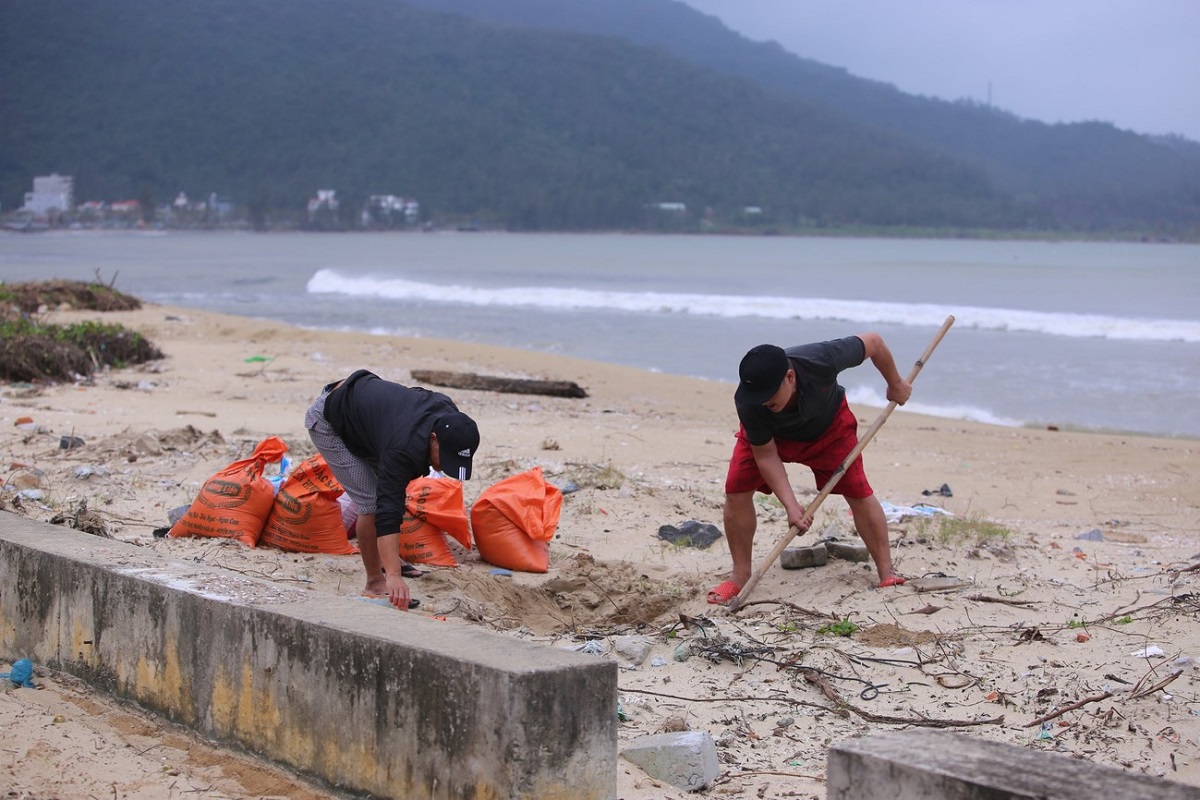
Related Posts
Non Nuoc Beach: The Famous Beach of Da Nang
Besides the Golden hands bridge – a global hit, Da Nang city also has beautiful beaches. If looking for somewhere great to stay and have a slow holiday, Non Nuoc
How to Get from Da Nang to My Son Sanctuary
Known as ‘the Angkor Wat of Vietnam’, My Son sanctuary boasts of its sophisticated temples dating back from 4th century. Sadly, in 14th century, it’s abandoned in the forests. Today,
Bach Ma National Park: Hiking, Trekking in Da Nang and Hoi An
Two best places for trekking and hiking in and near Da Nang are Son Tra mountain (peninsula) and Bach Ma national park. Which one is better is actually personal because these
Am Phu Cave (Hell Cave) – Things to Do in Da Nang
Although in the Marble mountains – the most visited attraction in Da Nang, travelers often miss Am Phu cave. One of reasons is that it’s mentioned much online and not
Asia Park and Sun Wheel in Da Nang (Sun World Da Nang Wonders)
Have you ever seen the wheel of Da Nang? That is the Sun Wheel. It’s a part of greater Asia Park – an amusement park with a heap of fun
How to Get to Golden Bridge from Da Nang
The Golden Bridge (aka the Golden Hands Bridge) in Da Nang is a must visit attraction in Vietnam today. Many foreign travelers come to the city, just because they love
Da Nang Food Specialties: What to Eat in Da Nang
Da Nang is known as a food capital of central Vietnam. This city boasts many yummy dishes, prepared by distinctive recipes and some of them are famous all over the
How to Visit Golden Bridge Vietnam
The Golden Hand Bridge of Ba Na hills today is a dream place to visit for many travelers. Since it opened in June 2018, millions of people have set their
Da Nang Shore Excursions: Guided Tours From Tien Sa Port
Da Nang Vietnam today is one of stopovers for many cruises that travel from continent to continent, from country to country. It owns an ideal seaport to moor and it
Han Market (Cho Han): Where to Shop in Da Nang?
In the heart of Da Nang, the Han market is a popular place for visitors to buy something to bring home due to the diversity of merchandise. Back to history,
Da Nang Cathedral (Da Nang Pink Church)
Da Nang became a French protectorate on 3rd October 1888, under the name “Tourane”. By the Han river, the colonists designed a grid of streets with public buildings, a city hall,
Things to Do in Ba Na Hills Besides Golden Bridge
According to local authorities, 50% of visitors coming to Da Nang and Hoi An visit the Ba Na hills. In other words, that is nearly 10 millions of people. This
Da Nang Half Day Tours
In addition to day trips, travelers have many options of half-day tours in Da Nang to choose from. Not to spend a full day at different places, maybe far from
Da Nang Private Car and Driver
Your next holiday destination is Da Nang? You prefer to travel by yourself? Hiring a private car is one of the best options for you to explore with freedom, flexibility
Da Nang and Hoi An Itinerary for Visitors Staying Overnight in Hoi An
Da Nang and Hoi An are twin cities in the heart of Central Vietnam. Both are popular tourist destinations for either domestic or international visitors, and share many similarities. Due
Da Nang Things to Do: Guide to What to Do in Da Nang Vietnam
Unquestionably, Da Nang deserves a holiday trip from all types of traveller. Firstly, due to the weather. It has a longer sunny time than the north but less hot than
Da Nang Best Things to Do and Reasons
Da Nang is the largest tourist center in Central Vietnam. It owns fascinating natural and cultural places that attract both Vietnamese and foreigners. In the busiest year, this city of
How to Get From Hoi An to Da Nang
Da Nang is the neighbouring city of Hoi An. It's the capital of Central Vietnam and has the most important (busiest) transport hubs of the region, such as airport, train
Hoi An or Da Nang: Which is Better for First Time Visitor?
Da Nang and Hoi An are located in Central Vietnam, with a distance of roughly 30 km. To the north, Da Nang is the capital city of the region, with
My Son Sanctuary Tour
My Son Sanctuary is a Unesco world heritage site, attracting 450,000 visitors in recent years. It’s the best remains left by the fallen Champa Kingdom which ruled a part of


